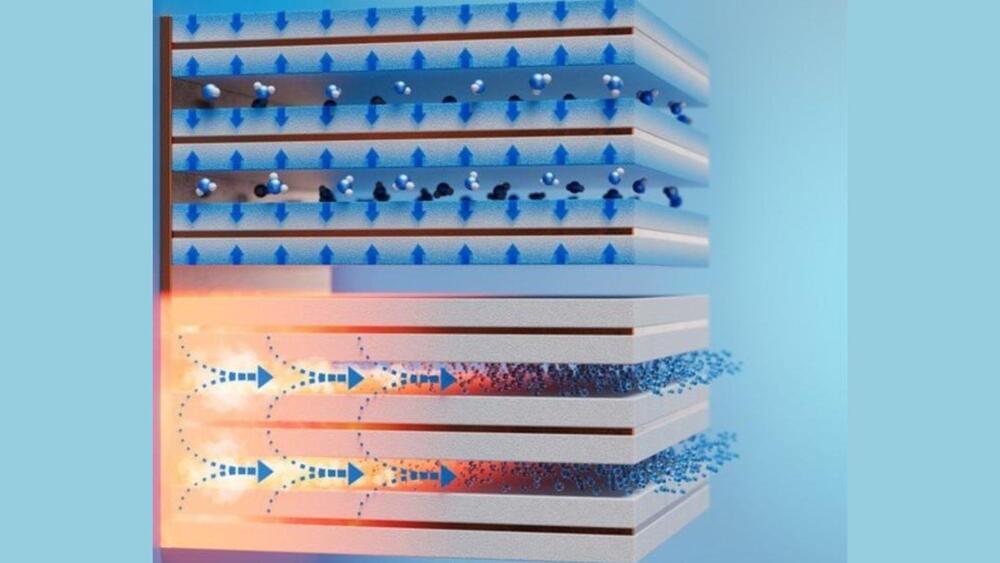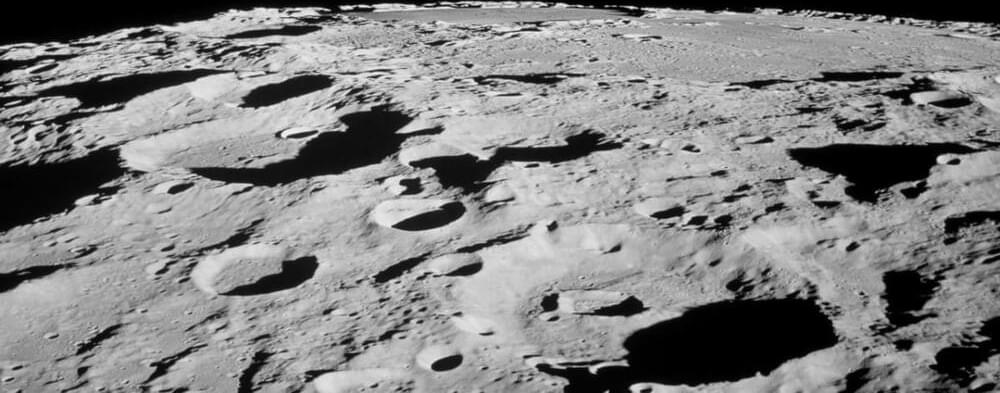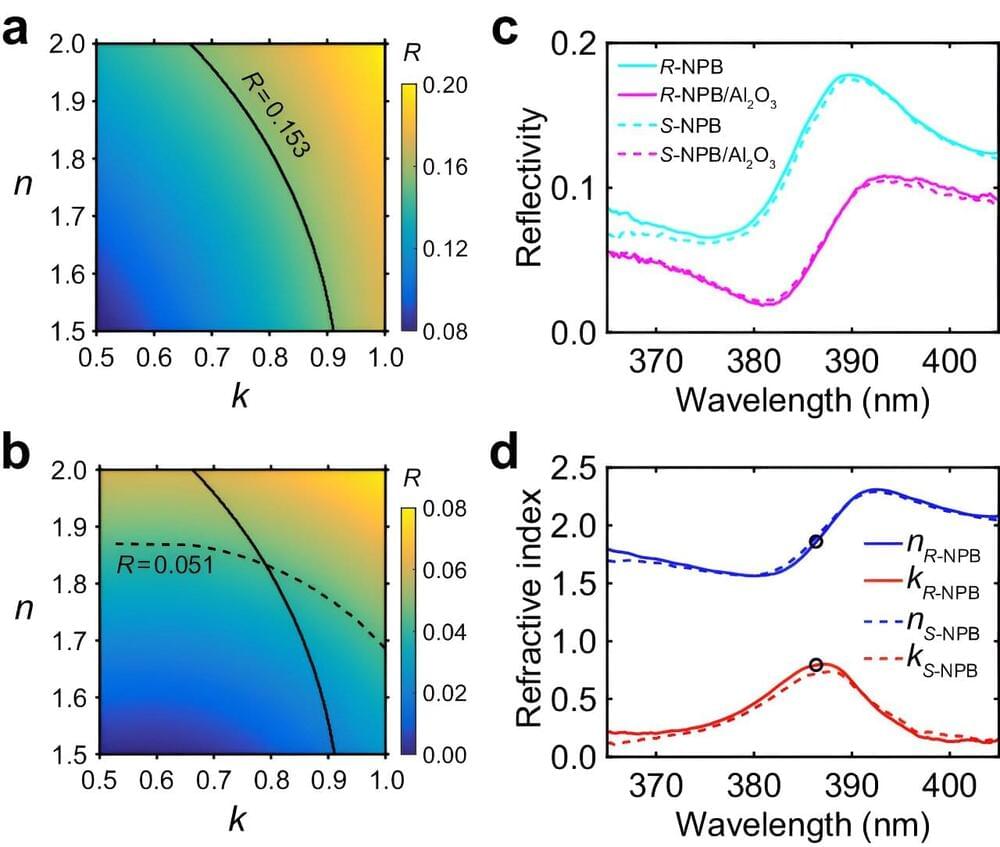Archive for the ‘sustainability’ category: Page 33
Jun 26, 2024
New tech extracts drinking water from dry air with 5 times efficiency
Posted by Raphael Ramos in categories: materials, sustainability
10 fins harvest over liter daily:
Using a commercially available coating material and copper, US researchers have designed a water harvester that works even in desert-like conditions.
Jun 26, 2024
The Future of Technology: Impact on Labor, Economy, and Society
Posted by Chris Smedley in categories: economics, robotics/AI, sustainability, transportation

Disruptive innovations in technology, such as humanoid robots and electric vehicles, will lead to significant changes in labor, economy, and society, posing both opportunities and challenges for the future.
Questions to inspire discussion.
Continue reading “The Future of Technology: Impact on Labor, Economy, and Society” »
Jun 26, 2024
How China’s Moon mission could reveal the origins of life on Earth
Posted by Dirk Schulze-Makuch in categories: biological, nuclear energy, space, sustainability
Update: China´s Moon Mission Returned Now Samples from the #Moon to #Earth. Why this is important, specially for the origin of life:
On June 1, China’s Chang’e-6 lander touched down in the South Pole-Atkin Basin — the largest, deepest, and oldest impact crater on the Moon. The probe almost immediately set to work drilling into the ground to collect about 2 kilograms of lunar material, which is already headed back to Earth, with a landing in Mongolia planned for June 25. It isn’t just planetary geologists who are excited at what the returning rocks and soil might reveal. If we’re lucky, the first samples from the lunar farside could also include some of the oldest fossils ever found.
The SPA basin, as it’s sometimes called, is the result of a gigantic impact that occurred between 4.2 and 4.3 billion years ago, at a time when the Moon and Earth were very close neighbors. The crater is roughly 2,500 kilometers (1,600 miles) in diameter and between 6.2 km and 8.2 km (3.9 to 5.1 mi) deep, encompassing several smaller craters like the Apollo basin, where Chang’e-6 landed, and Shackleton crater, parts of which lie in perpetual shadow.
Continue reading “How China’s Moon mission could reveal the origins of life on Earth” »
Jun 26, 2024
First bendable perovskite solar cell to hit record 22.8% efficiency
Posted by Gemechu Taye in categories: solar power, sustainability

In a world first, a team of scientists has successfully developed the first flexible perovskite/silicon tandem solar cell with a record efficiency of 22.8 percent.
While other scientists have developed flexible solar cells before, the new efficiency record sets a new precedent and represents a big step forward for the technology.
Continue reading “First bendable perovskite solar cell to hit record 22.8% efficiency” »
Jun 26, 2024
Biodegradable Oxide Neuromorphic Transistors for Neuromorphic Computing and Anxiety Disorder Emulation
Posted by Dan Breeden in categories: health, robotics/AI, sustainability
Brain-inspired neuromorphic computing and portable intelligent electronic products have received increasing attention. In the present work, nanocellulose-gated indium tin oxide neuromorphic transistors are fabricated. The device exhibits good electrical performance. Short-term synaptic plasticities were mimicked, including excitatory postsynaptic current, paired-pulse facilitation, and dynamic high-pass synaptic filtering. Interestingly, an effective linear synaptic weight updating strategy was adopted, resulting in an excellent recognition accuracy of ∼92.93% for the Modified National Institute of Standard and Technology database adopting a two-layer multilayer perceptron neural network. Moreover, with unique interfacial protonic coupling, anxiety disorder behavior was conceptually emulated, exhibiting “neurosensitization”, “primary and secondary fear”, and “fear-adrenaline secretion-exacerbated fear”. Finally, the neuromorphic transistors could be dissolved in water, demonstrating potential in “green” electronics. These findings indicate that the proposed oxide neuromorphic transistors would have potential as implantable chips for nerve health diagnosis, neural prostheses, and brain-machine interfaces.
Keywords: anxiety disorders; neuromorphic computing; oxide neuromorphic transistors; proton coupling; synaptic plasticity.
Jun 25, 2024
Researchers propose the next platform for brain-inspired computing
Posted by Dan Breeden in categories: mathematics, robotics/AI, sustainability
Computers have come so far in terms of their power and potential, rivaling and even eclipsing human brains in their ability to store and crunch data, make predictions and communicate. But there is one domain where human brains continue to dominate: energy efficiency.
“The most efficient computers are still approximately four orders of magnitude — that’s 10,000 times — higher in energy requirements compared to the human brain for specific tasks such as image processing and recognition, although they outperform the brain in tasks like mathematical calculations,” said UC Santa Barbara electrical and computer engineering Professor Kaustav Banerjee, a world expert in the realm of nanoelectronics. “Making computers more energy efficient is crucial because the worldwide energy consumption by on-chip electronics stands at #4 in the global rankings of nation-wise energy consumption, and it is increasing exponentially each year, fueled by applications such as artificial intelligence.” Additionally, he said, the problem of energy inefficient computing is particularly pressing in the context of global warming, “highlighting the urgent need to develop more energy-efficient computing technologies.”
Neuromorphic computing has emerged as a promising way to bridge the energy efficiency gap. By mimicking the structure and operations of the human brain, where processing occurs in parallel across an array of low power-consuming neurons, it may be possible to approach brain-like energy efficiency.
Jun 25, 2024
| Proceedings of the National Academy of Sciences
Posted by Dan Breeden in categories: biological, climatology, physics, robotics/AI, sustainability
Physics meets machine learning.
The Progress and Promise for Science in Indonesia Regional Special Feature focuses on biodiversity and climate change, highlighting research based on the unique geology and biology of a nation comprising more than 17,600 islands, containing about 10 percent of the world’s remaining tropical forests, and home to over 300,000 species of wildlife.
Jun 24, 2024
New techniques reveal properties of solid-state chiral materials
Posted by Saúl Morales Rodriguéz in categories: computing, solar power, sustainability
Chiral molecules—that is, those that have mirror images of themselves—have significant benefits for transistors and solar energy devices. Studying their properties in close detail, though, has been tricky due to the limited methods for doing so.
Jun 24, 2024
Bending the Rules of Solar: Novel Flexible Perovskite/Silicon Tandem Solar Cell Achieves Record Efficiency
Posted by Saúl Morales Rodriguéz in categories: engineering, solar power, sustainability
A new study highlights the successful development of the first flexible perovskite/silicon tandem solar cell with a record efficiency of 22.8%, representing a major advance in flexible solar cell technology.
Although rigid perovskite/silicon tandem solar cells have seen impressive advancements, achieving efficiencies as high as 33.9%, the development of flexible versions of these cells has been limited. The main hurdle is improving light absorption in the ultrathin silicon bottom cells without compromising their mechanical flexibility.
In their pioneering study, a research team led by Dr. Xinlong Wang, Dr. Jingming Zheng, Dr. Zhiqin Ying, Prof. Xi Yang, and Prof. Jichun Ye from the Ningbo Institute of Materials Technology and Engineering, Chinese Academy of Sciences, has successfully demonstrated the first flexible perovskite/silicon tandem solar cell based on ultrathin silicon, with a thickness of approximately 30 µm. By reducing wafer thicknesses and adjusting the feature sizes of light-trapping textures, they significantly improved the flexibility of the silicon substrate without compromising light utilization. Additionally, by capping the perovskite top cells, they enhanced the mechanical durability of the device, thus addressing concerns related to fractures in the silicon surface.















